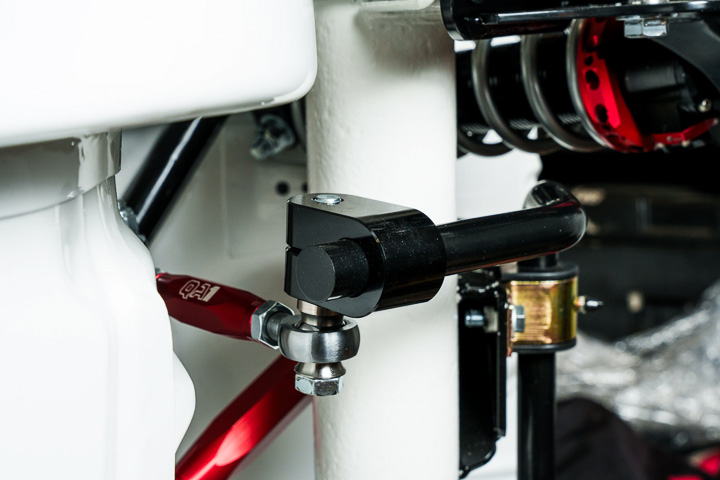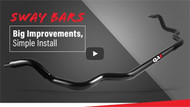Are Larger Sway Bars Better?
In the world of sway bars (anti-roll bars), bigger seems to be better. Can they be too big? Or do you even need a sway bar at all? There’s a lot of questions you might be asking yourself about sway bars.
Are larger sway bars better? In most applications, yes. When you start adding bigger tires and stickier tires, upgraded shocks, and more aggressive driving, your car or truck can benefit from bigger sway bars.
WHAT DO SWAY BARS DO?

What exactly is it that an anti-roll or sway bar does? In essence, they help keep the vehicle flat during cornering by tying the left- and right-side suspension together with a spring.
When you’re turning right, the front left suspension is being loaded while the front right is being unloaded - the vehicle is rolling over. With a sway bar installed in that same hard-right turn, as the left suspension is being loaded, it’s twisting the bar. On the other side, the right suspension is unloading, trying to twist the bar the other way. Here’s another way to look at it: as one side is loading, it’s pushing up on the bar, while the side unloading is trying to pull the bar down. With the spring steel sway bar, the sway bar is able to help keep the car flat during cornering.
WHAT ARE THE MATERIALS USED FOR SWAY BARS?
Sway bars aren’t just a piece of steel attached to the suspension. There’s quite a bit of engineering and fitment that goes into them. There are several variations, from a solid steel sway bar to a tubular sway bar, along with different diameters.
QA1 sway bars are generally made from Chromoly and are larger than stock to give your ride a better-performing suspension system. All sway bars are engineered for their application, as they have to fit around other suspension components and larger wheels. QA1 also takes turning radius into consideration and keeps the bars as tight to the chassis as possible to help with turning radius.
Along with the bar, there are bushings that attach the sway bar to your frame and control arms. QA1 upgrades these to polyurethane bushings that don’t deflect like a rubber bushing does. This means the sway bar is able to work more efficiently for a longer period of time.

WHY SHOULD I CONSIDER AN UPGRADE?
Oftentimes, the factory sway bars aren’t up to par. When you put on modern tires that maintain more traction and push the car in a corner more, the car will want to sway/roll more. In most applications, there isn’t even a factory sway bar in the rear, leaving room for a huge improvement.
Installing a set of sway bars is one of the easiest upgrades you can do for your suspension. Upgrading to a set of QA1 sway bars is a job that usually only takes an hour or two with basic hand tools - an easy upgrade for a drastic change in your suspension.
WILL SWAY BARS RESULT IN A STIFF RIDE?
Well-engineered sway bars will not result in a stiff ride. They complement the suspension but do not overpower them. However, bigger is not always better - you can go too big! If you go too big, the suspension won’t be able to twist the sway bar properly, which would result in a stiff ride.
QA1 takes this into consideration when designing our sway bars. We test different diameters to find out what sway bars will give your car optimum performance without sacrificing ride quality.
Driving down the road, sway bars play little to no effect on how soft or firm your car rides. Spring rate, shock valving, and tire sidewall size are the biggest contributing factors to a stiff or smooth ride. The spring rate of the sway bars only comes into effect when cornering, when it helps to reduce or eliminate sway.
If you have any other questions on sway bars, please feel free to give us a ring at (952) 985-5675 or shoot us an email - we are happy to help


